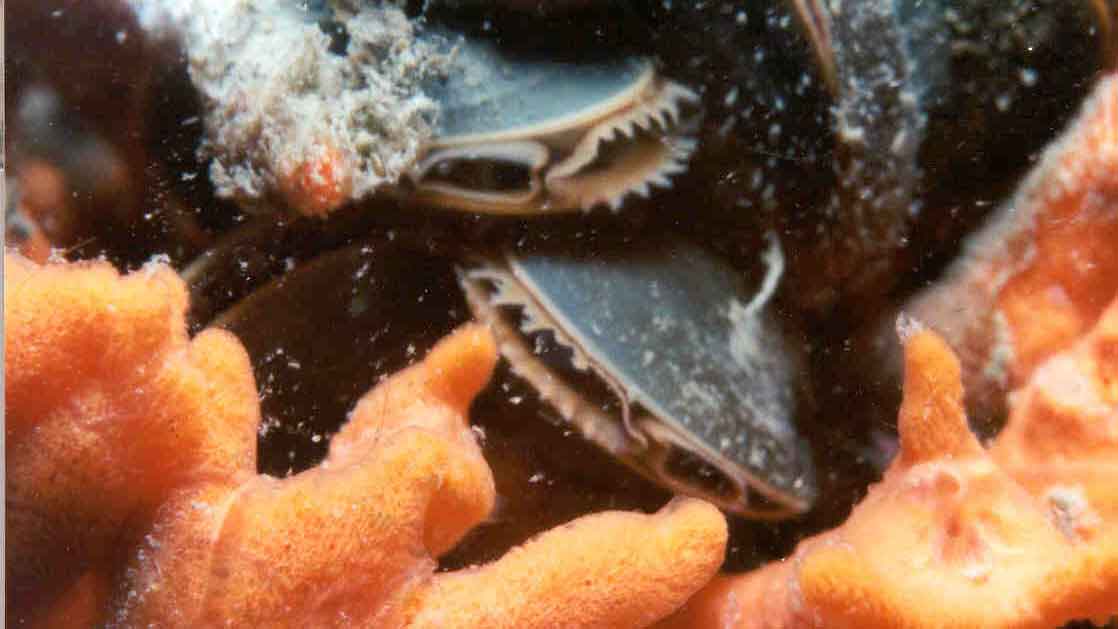Max Size: 10 cm (4 in)
Habitat: Tidal estuaries, coastal waters, from the Arctic to North Carolina
Diet: Plankton
Fun Facts:
- In the planktonic larval stage, Blue Mussels float freely through currents before finding a surface upon which to attach and call home
- Blue Mussels are semi-sessile organisms, meaning they can detach and reattach to surfaces such as rocks and pilings to better position themselves during changes in tides with hair-like, adhesive strands called byssal threads
- Their scientific name means “edible mussel”
- Like other bivalve mollusks, mussels can help to reduce the amount of excess nutrients (such as nitrogen and phosphorus) in water bodies as they metabolize and immobilize them
